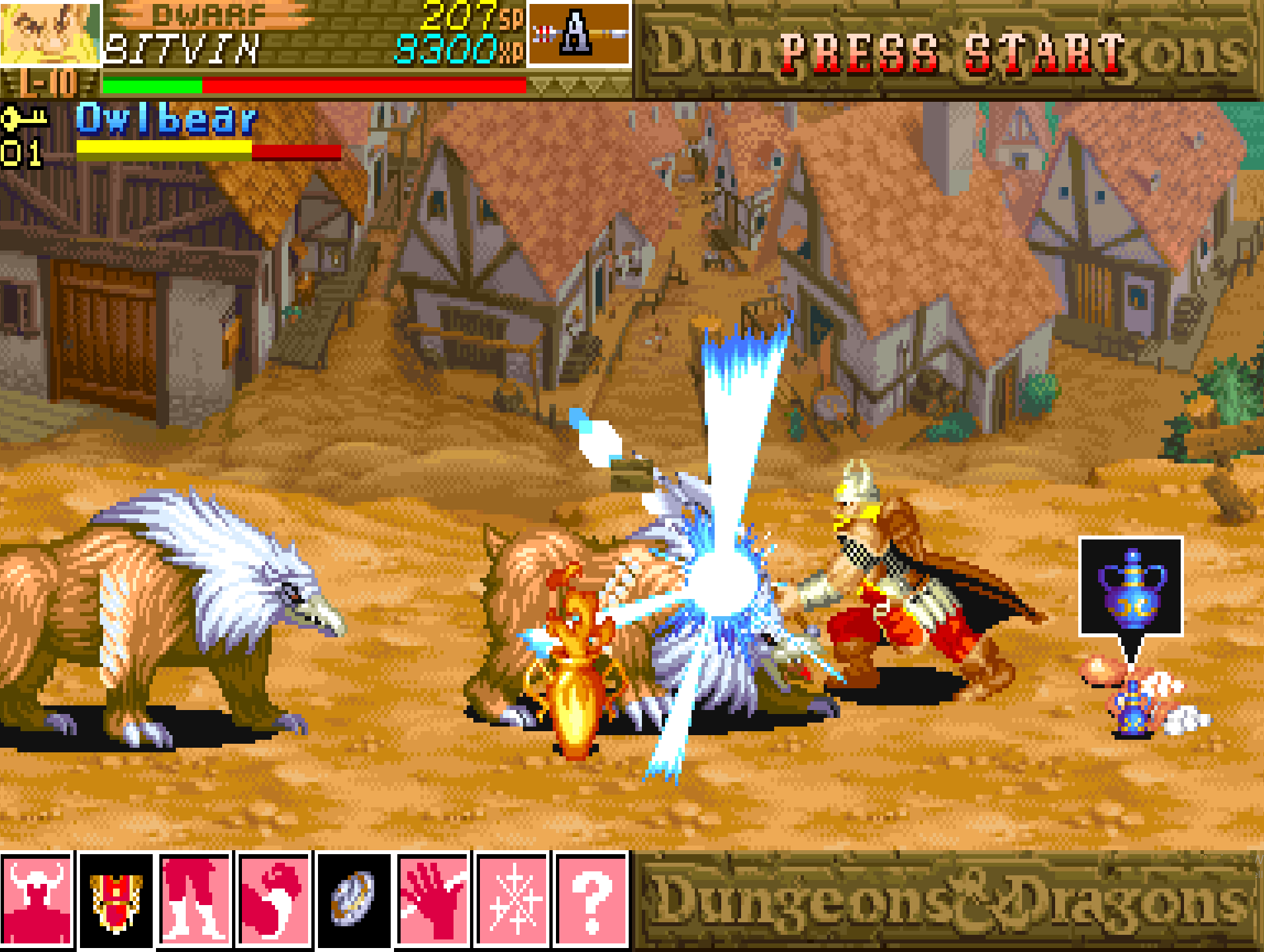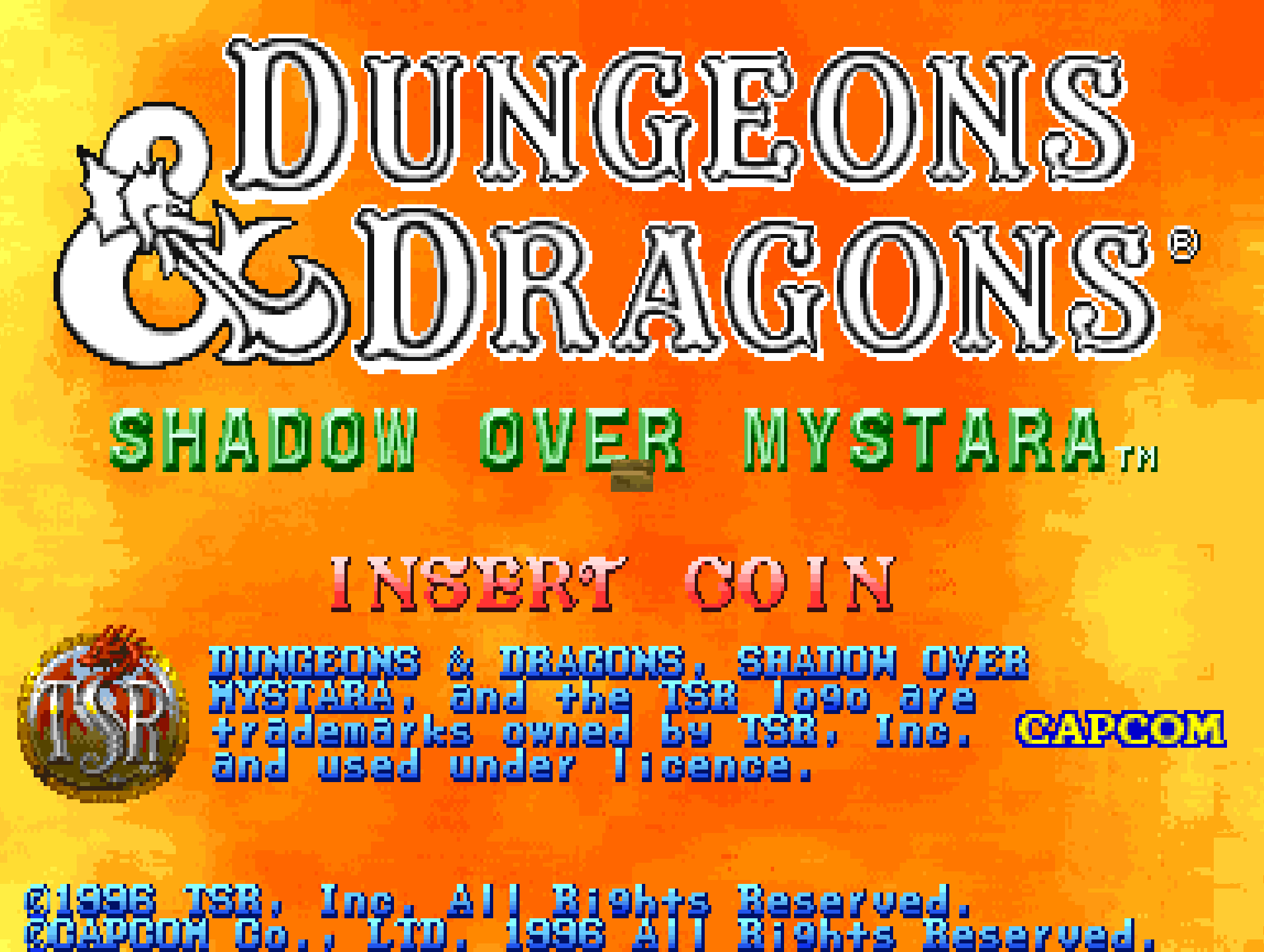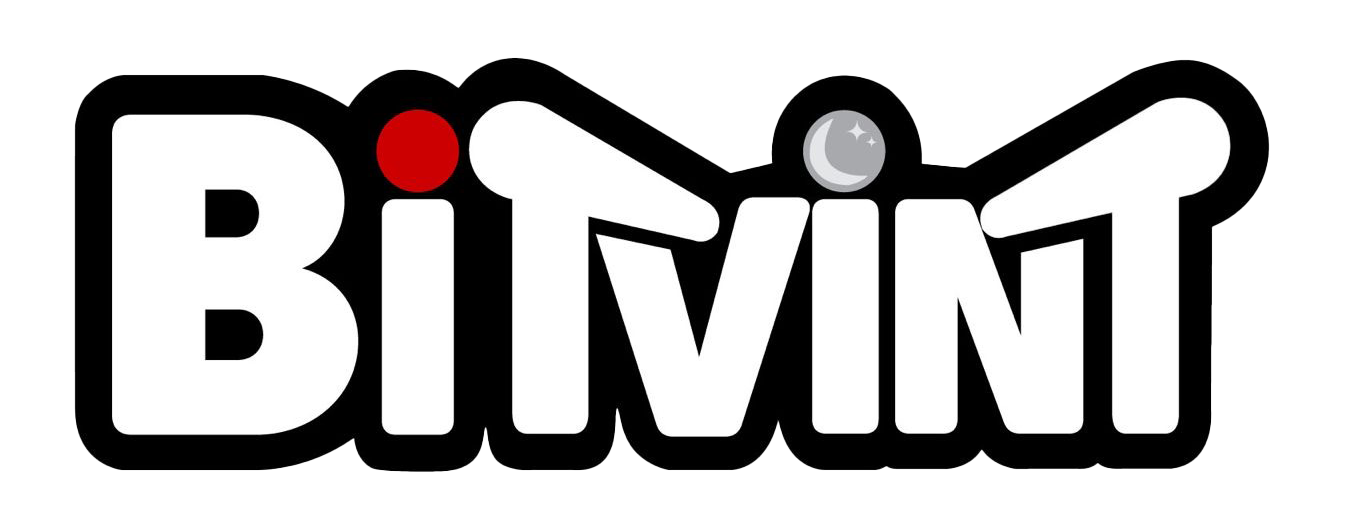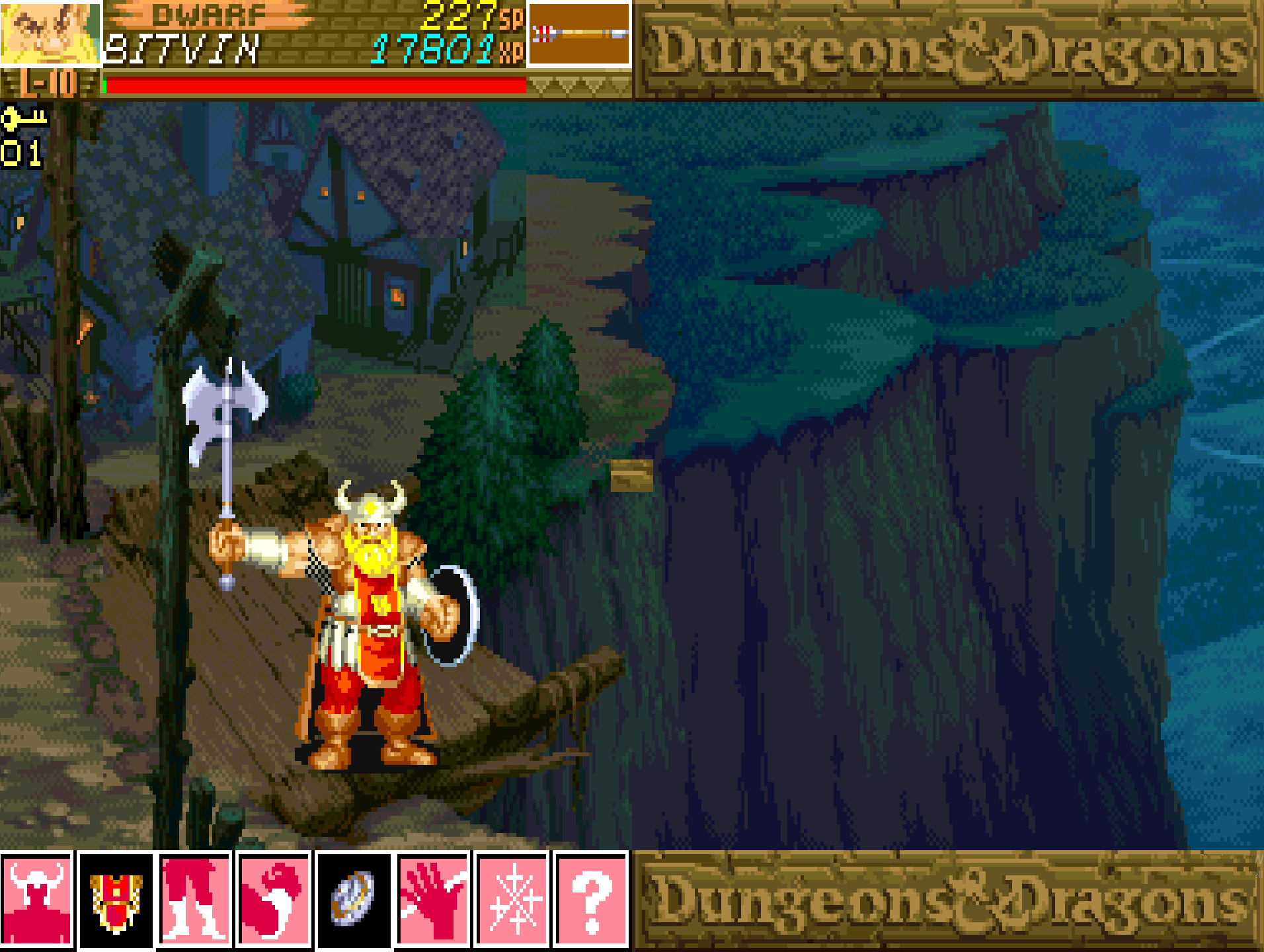Introduction
Released in 1996 by Capcom, Dungeons & Dragons: Shadow over Mystara is the celebrated sequel to Tower of Doom and one of the most ambitious arcade beat-’em-ups ever created. Set in the D&D Mystara universe and developed with full TSR licensing, it blends side-scrolling action with deep RPG mechanics, branching paths, multiple endings, and six unique character classes. With massive replayability and co-op depth, it’s widely considered one of Capcom’s finest CPS-2 arcade titles.

Development and History
- Developer: Capcom
- Publisher: Capcom
- Release Date: 1996
Built on Capcom’s CPS-2 hardware, Shadow over Mystara pushed arcade design forward with fluid animation, huge character rosters, advanced inventory systems, and dynamic magic. Directed by Noritaka Funamizu, it served as the final entry in Capcom’s two-game D&D arcade series.
It expanded the formula introduced in Tower of Doom, improving everything from combat mechanics to stage design and narrative interactivity.

Gameplay Video
Gameplay and Mechanics
Core Gameplay
Players choose one of six classes—Fighter, Cleric, Elf, Dwarf, Thief, or Magic-User—and progress through a branching story filled with monsters, loot, and magic.
- Class-Based Play: Each character has unique strengths, weaknesses, and abilities.
- Inventory System: Access real-time menus for spellcasting, item use, and equipment changes.
- Magic and Scrolls: Magic-Users and Elves have expansive spell lists; scrolls and wands add variety.
- Co-Op Gameplay: Up to four players can team up, encouraging synergy and role-based strategy.
Challenges
- Complex Enemy Encounters: Foes have varied resistances, tactics, and special moves.
- Limited Resources: Magic and health items are scarce—team management is key.
- Multiple Endings: Player choices throughout affect which final boss and ending you receive.
- Hidden Areas: Secrets, branching paths, and bonus stages reward exploration.

Cultural Impact and Legacy
- Genre Pinnacle: Considered one of the deepest and most replayable beat-’em-ups of all time.
- TSR Collaboration: Maintained close ties to D&D rules and Mystara lore.
- Modern Re-Releases: Featured in Dungeons & Dragons: Chronicles of Mystara for modern platforms.
- Arcade Fan Favorite: Its blend of combat, tactics, and fantasy helped it outlive most of its arcade-era peers.

Fun Facts
- Expanded Classes: The Thief and Magic-User were new additions not present in Tower of Doom.
- Custom Spells: Some high-level spells replicate D&D magic like Meteor Swarm or Lightning Bolt.
- Inventory Swapping: Players could drop items for others—unusual for arcade games.
- Voice Acting: Included brief voice clips for commands, item use, and boss intros.

Conclusion
Dungeons & Dragons: Shadow over Mystara is a shining example of what arcade games could achieve when depth, narrative, and co-op gameplay were prioritized. With rich mechanics, sprawling content, and true D&D atmosphere, it remains a high watermark in Capcom’s legendary arcade catalog.
Want to Go Deeper Into Arcade History?
If this game left you craving more, dive into the complete stories behind some of the most iconic arcade genres and franchises. These articles explore the rise, innovation, and legacy of the games that shaped arcade culture:
- Top 25 Beat ’Em Up Arcade Games of All Time – Discover the ultimate ranking of the greatest beat ’em ups ever to hit arcades
- The History of Beat ’Em Up Arcade Games – From Double Dragon to Final Fight, here’s how brawlers ruled the late ’80s.
- Donkey Kong’s Rise to Fame: How a Desperate Bet Created a Gaming Legend – The untold story of how Nintendo turned failure into a global icon, launching Mario, Miyamoto, and a new era of arcade storytelling
- The Economics of Arcade Gaming: The Golden Age of Coin-Op – This article explores the full arc of arcade economics: the explosive rise, the industry-shaking crash, and the waves of reinvention that kept the business alive
- The Complete History of Mortal Kombat Arcade – How a gritty fighter became a pop culture phenomenon.

